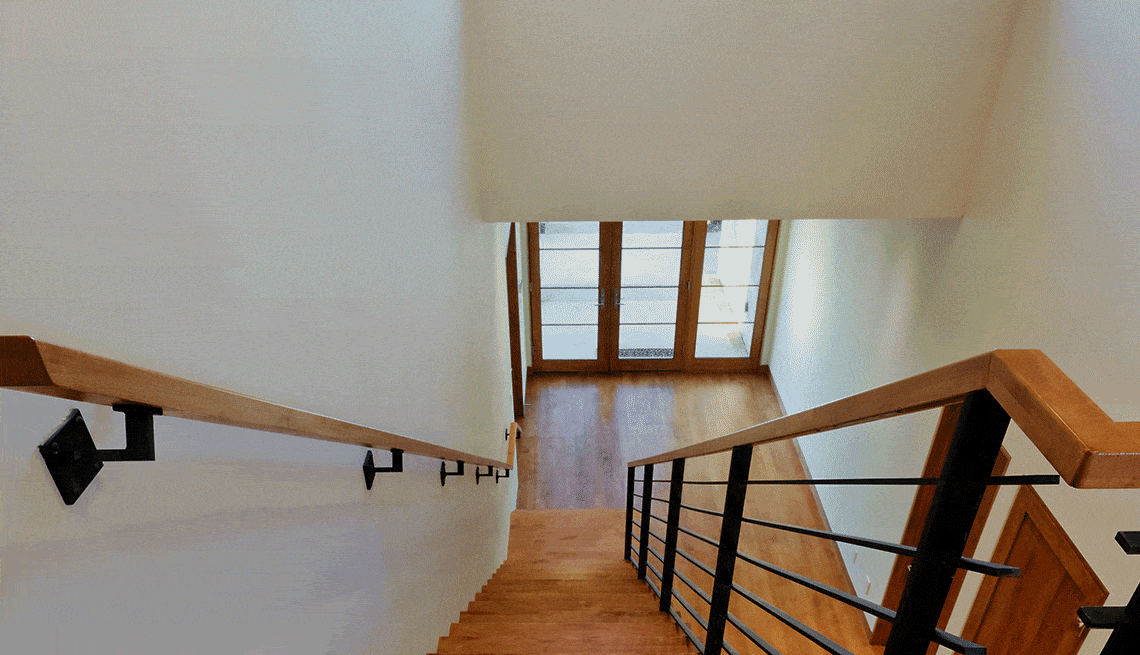
The hidden dangers of progressive lenses | members only
- Select a language for the TTS:
- UK English Female
- UK English Male
- US English Female
- US English Male
- Australian Female
- Australian Male
- Language selected: (auto detect) - EN
Play all audios:

I am a healthy and physically fit 73-year-old. I exercise four or more days a week for at least an hour, and I’m strong and spry enough to chase, capture and tickle my five grandchildren.
Even in my 60s, my doctor joked that I could probably still pass the Marine Corps physical. So I was stunned to suffer not one or two but five serious falls this past year—two on staircases
and three tripping over unseen obstacles and drop-offs right at my feet—landing me in the emergency room three times. The combined injury toll was a badly broken collarbone, a severely
sprained ankle that put me in a boot for two months, a facial scar, two mild concussions and four staples to close a gash in my head. The American Public Health Association (APHA) reports
that a variety of health care organizations and governmental agencies recognize falls for adults 65 and over as an “urgent national public health crisis”; it’s the leading cause of
injury-related deaths in people 65 and up, according to the Centers for Disease Control and Prevention. There’s a reason why some older adults take bad tumbles, and it’s not because we’re
frail. It’s because of our eyeglasses. A PRESCRIPTION FOR FALLING DOWN COMPARING TYPES OF LENSES SINGLE-VISION LENSES * Distance lenses (for nearsightedness) pose no additional threat of
falls. Reading glasses may, and should only be worn for close-up work, not when walking. BIFOCAL LENSES * Bifocal lenses have a distinct line separating distance and close-up vision
enhancement. They may pose an increased risk for falls. PROGRESSIVE LENSES * Progressive lenses change (progressively) from distance viewing at the top to close-up reading at the bottom.
They may pose an increased risk of falls. Last November, the APHA urged the nation’s health professionals to carefully screen for patients at highest risk of falling, and identified 10 major
causes contributing to the 3 million emergency room visits and 38,000 fall-related deaths among older adults, including medications, physical inactivity, dementia, neurological and
metabolic disorders such as diabetes, and “vision impairment.” What’s not spelled out is that when it comes to impaired vision and falls, the glasses themselves could be the danger: Several
scientific studies have found that older people like me who wear multifocal eyeglasses—progressives, bifocals or trifocals—to correct both near- and farsightedness were approximately twice
as likely to suffer falls than those wearing single-vision lenses. A compilation of studies in the Journal of Refractive Surgery found that those with multifocal lenses are three times as
likely to trip and fall when walking outside the home. “As optometrists and ophthalmologists, we don’t see falling as a problem,” says Daniel H. Chang, M.D., a California ophthalmologist
who wrote the study. “Because if the patient trips and falls, they don’t come and complain to us. They usually go to the hospital—or a funeral home.” The reason those of us with multifocal
lenses are at increased risk of falls is that these types of glasses make it harder to see the ground below us. This is not a new finding. The newsletter Harvard Women’s Health Watch
summarized the multifocal problem in 2010: “When we walk, we normally see the ground from a distance of five-to-six feet, but the focal length of the lower segment of multifocal lenses is
only slightly more than one foot. Consequently, our view of the ground is … impaired at precisely the distance you need to detect and avoid ground-level obstacles.” In the largest randomized
controlled scientific trial to date, Australian researchers in 2010 tracked 606 people 65 and up who wore multifocals over 13 months. Among active people who went outside at least three
times a week, those who switched to single-vision lenses for distance when walking outdoors fell 40 percent less than those who wore their multifocals, says Stephen Lord, senior principal
research fellow at Neuroscience Research Australia and professor at the University of New South Wales, who conducted the study. He describes walking with multifocals instead of
single-vision lenses as a form of “elective disability.”
